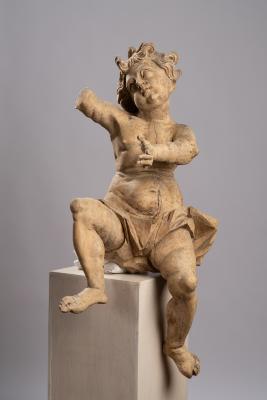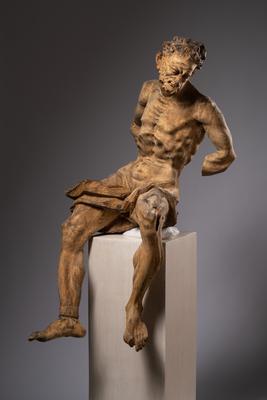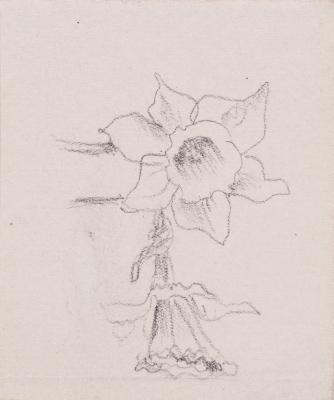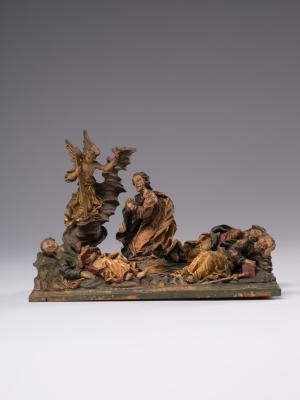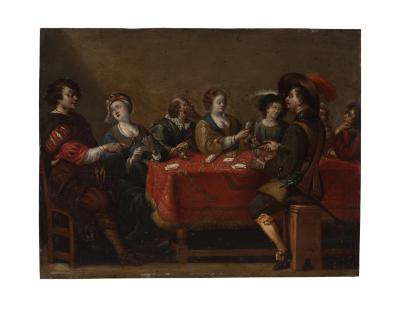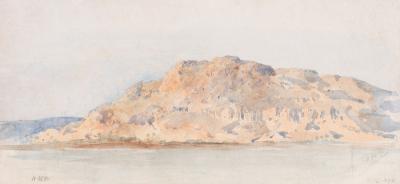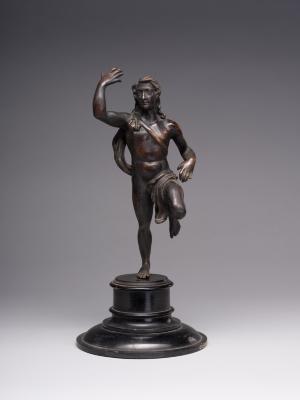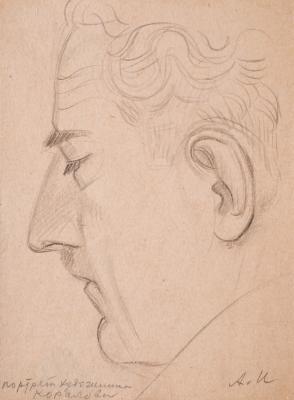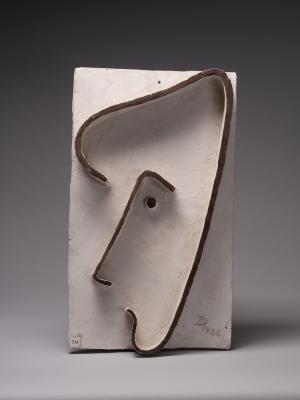The multi-figure sketch composition represents a group of satyrs depicted against the blurred umber background. In ancient Greek mythology, satyrs were forest and mountain deities of lower rank, who embodied the primordial force of nature; they were deities of fertility and constant companions of Dionysus. Satyrs were depicted as men with horns, pointed ears, a snub nose, often with a goat's or horse's tail, and animal legs. At the beginning of the twentieth century, the interest in ancient themes, which were somewhat forgotten in the 19th century, increased significantly; they began to be perceived somewhat differently, mostly nostalgically. At this time, the art of Ancient Greece was reviewed. Artists from different countries eagerly studied the works of different periods of Greek history and reproduced the impulses of forgotten eras in their works. Jacek Malczewski rarely turned to ancient plots, although he sometimes tried to combine antiquity with modernity, as in the presented work.






